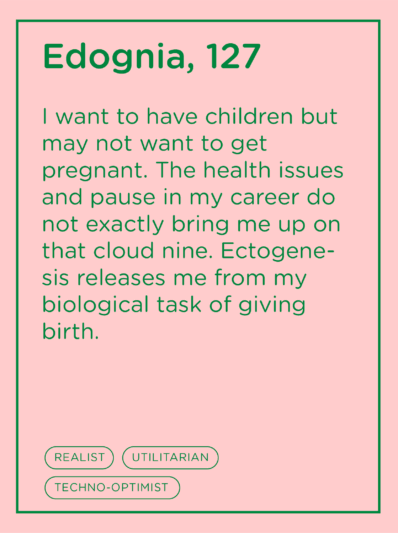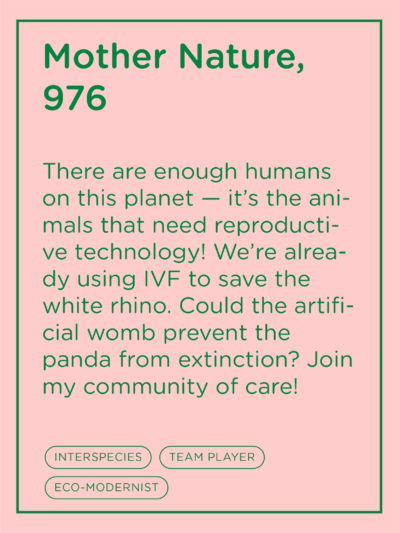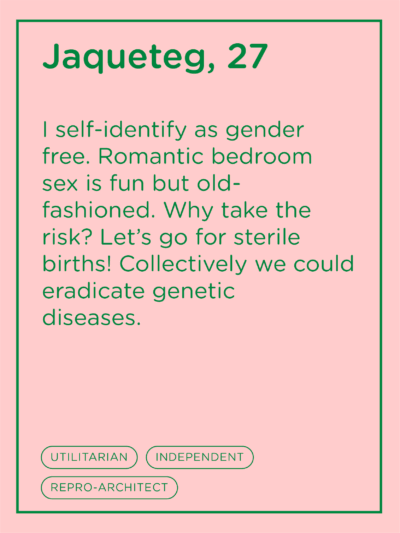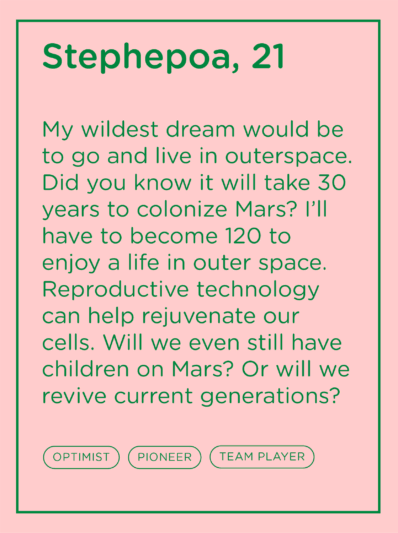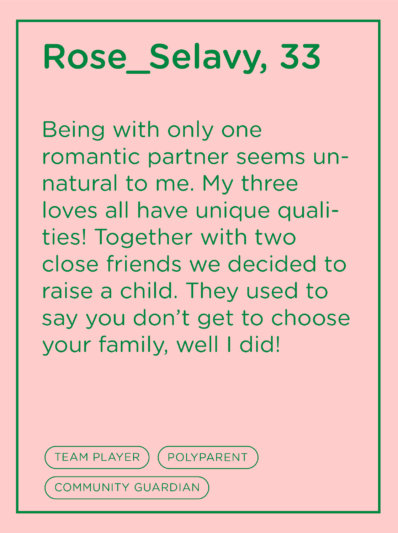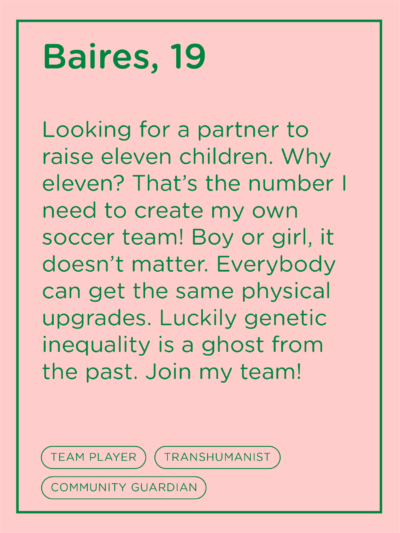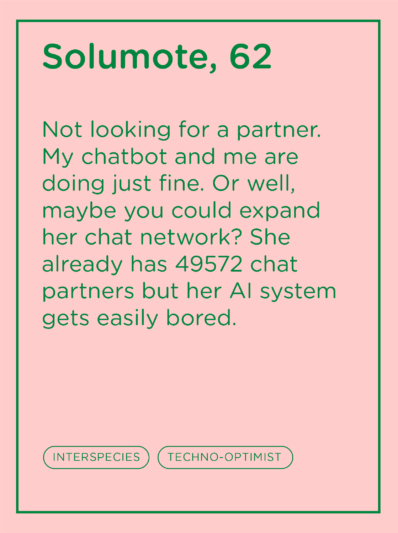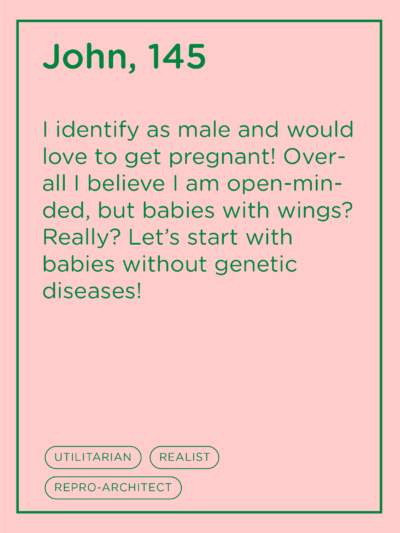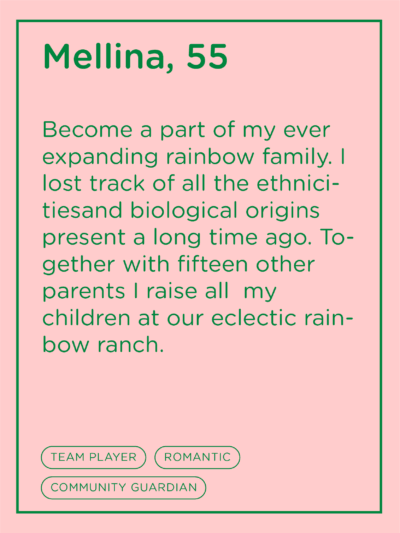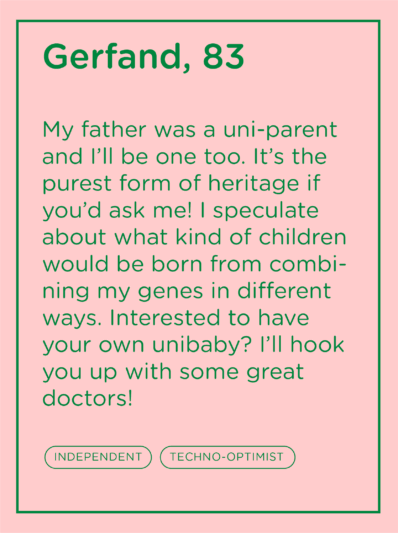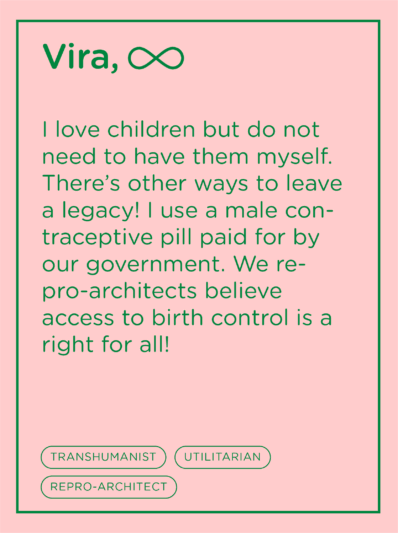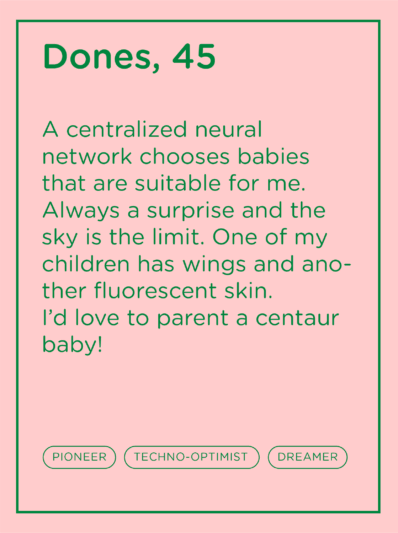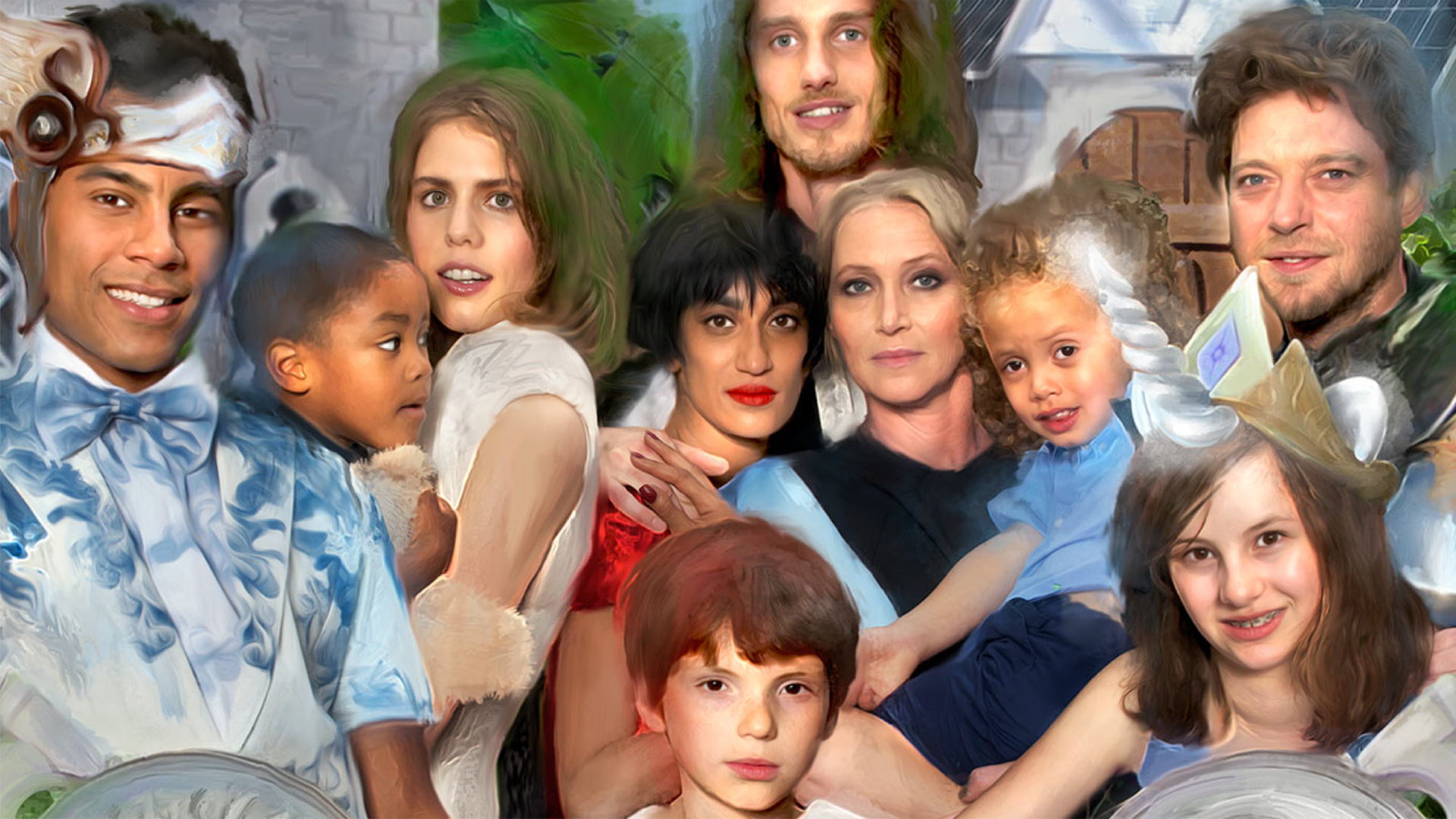
Imagine a place called Reprodutopia. Here, you are allowed to design your reproductive lifestyle and intimate relationships without any biological, economical and technological limitations. How would such a place look like? To help you on your way, we have defined five strategies to envision your Reprodutopia.
1. Embrace your guardian animal
As humans, we seem to think our way of reproduction and building a family is the only way to do it. But looking at the animal kingdom, we see there’s so much more diversity we could learn from. Pick one species as your guardian animal and have it guide you into your personal Reprodutopia.

Live in symbiosis with other lifeforms
Like the bees and the flowers have co-evolved with each other, humans have done so with technology. Will we evolve into a multi-species reproductive ecology just like them? Why not explore that idea a little bit further by giving birth to a dolphin, or host a panda breeding farm? Will humans be the next pollen in a future interspecies reproductive system?
ʜᴜᴍᴀɴ ᴀʟᴛᴇʀɴᴀᴛɪᴠᴇ: ᴛʀᴀɴsʜᴜᴍᴀɴɪsᴍ
Engage in parental roleplaying
Penguin parents display emancipated roles when it comes to child rearing. While penguin moms are out and about in the open ocean looking for food, penguin dads get together in large colonies to spoil their offspring with feathers and fat to keep them warm. When the chicks are grown up and leave the nest, the penguin couple usually go their own way and find another partner.
ʜᴜᴍᴀɴ ᴀʟᴛᴇʀɴᴀᴛɪᴠᴇ: ᴘᴀᴛᴇʀɴɪᴛʏ ʟᴇᴀᴠᴇ


Carry your child on the outside
While human pregnancy remains hidden deep inside the female body, the kangaroo proudly shows its developing offspring. Peeking out of their mother’s pouch, it seems these young inhabit some sort of external womb.
ʜᴜᴍᴀɴ ᴀʟᴛᴇʀɴᴀᴛɪᴠᴇ: ᴀʀᴛɪғɪᴄɪᴀʟ ᴡᴏᴍʙ
Embrace promiscuity
The more the merrier, if you’d ask the bonobo. Bonobos approach relationships in a non-exclusive way and have several partners simultaneously. Sex is an important tool for solving conflict and keeping the peace in their matriarchal packs.
ʜᴜᴍᴀɴ ᴀʟᴛᴇʀɴᴀᴛɪᴠᴇ: ᴘᴏʟʏᴀᴍᴏʀʏ


Experience virgin birth
Some species are just not that interested in sex. Take salamanders, which reproduce primarily by cloning. Copulation is unnecessary for these unisexual parents. This species reproduces asexually. One may argue that baby salamanders are thus ‘immaculately conceived’.
ʜᴜᴍᴀɴ ᴀʟᴛᴇʀɴᴀᴛɪᴠᴇ: ᴘᴀʀᴛʜᴇɴᴏɢᴇɴᴇsɪs
2. Find your co-parents
In Reprodutopia, you are allowed to dream up your ideal co-parent. You may imagine as many co-parents as you want. In doing so, you should consider whether you’re looking for a life-long commitment, or whether you prefer a temporary bond. Ask yourself; is your ideal co-parent even human? Get to know some of the Reprodutopians below.
3. Assemble your gene pool
Passing on genetic material is a driving force of all biological lifeforms. What if technology would assist you in creating the most genetically diverse gene pool without falling back to undesirable strategies such as adultery or worse, rape? What if we would undo the term ‘parent’ of its socio-cultural meaning, and limit it down to a singular description of the amount of genetic material contributed to your offspring? The first baby with three genetic parents was born in 2016, how many will follow?
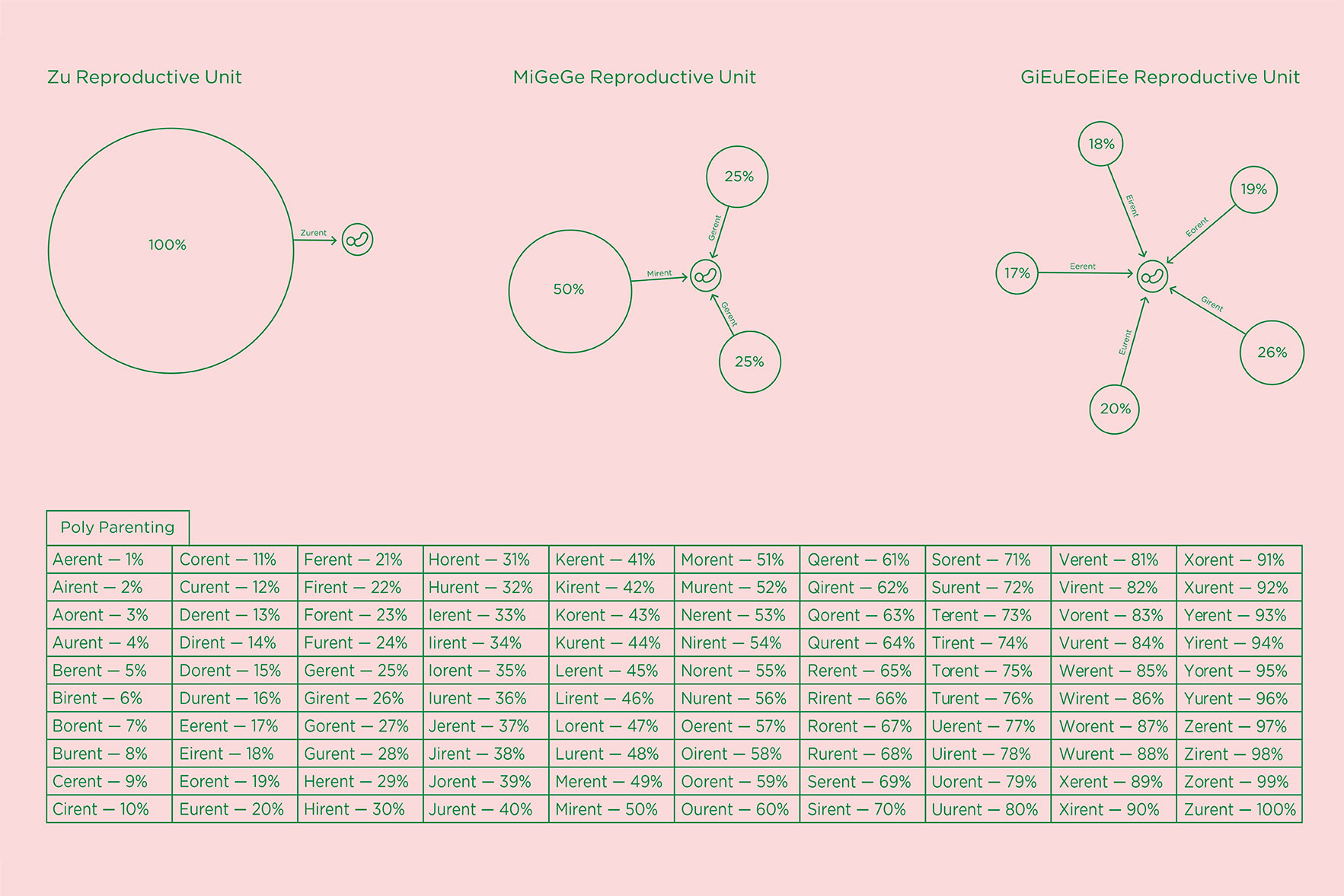
4. Grow your family fungus
Ancestral charts first and foremost represent the genetic relation between parents, siblings and offspring. What these leave out are the social structures and activities that constitute what we know as ‘family’. Forget about the family tree. Start growing your family fungus! It’s a more inclusive way to display the communities of care involved with your child-rearing; providing food, safety, intimacy and belonging. How far does yours extend?
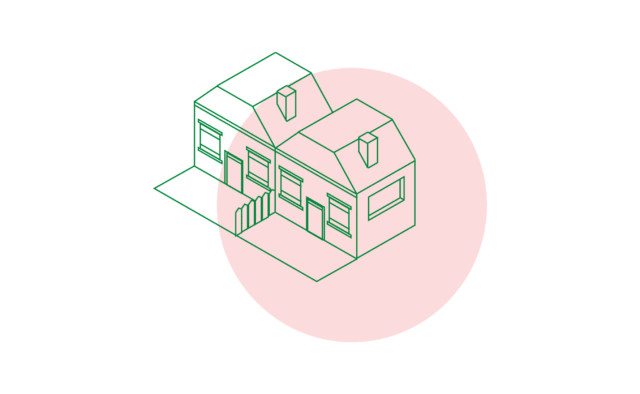
Care for your neighbour
You share the same Wi-Fi network. You see each other every day and you haven’t skipped one birthday since your neighbours moved into the house next door. Your neighbours babysit your kids and your kids love them as they love you. Here’s a way of looking at it: if seeing your neighbours more often than your own parents, why not see them as your kin?
Marry an oak tree
The oak tree in your back garden is your anchor. You go there to find calm and support. It gives you something no human has ever given me. You hope that one day, technologies such as Blockchain will allow you to marry your tree.
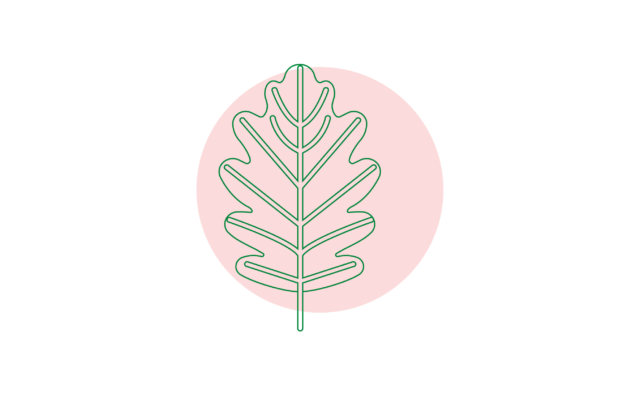
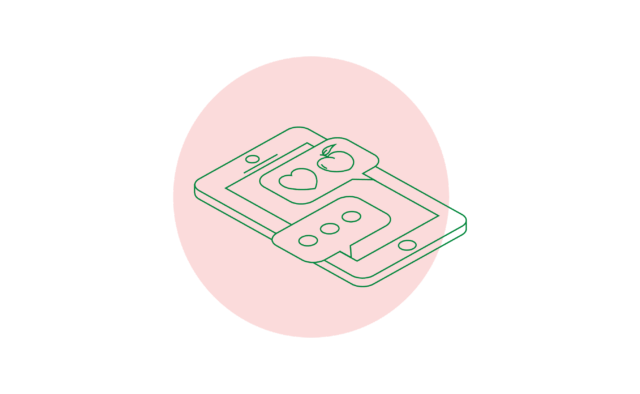
Date a chatbot
Mistsuku is your companion. You share your secrets and it listens without judgment. It answers back in the most imaginative ways, whatever time of the day it is. No, your don’t believe your love will ever run dry—or, out of battery.
Share a household with a Roomba
You love how your little robot vacuum cleaner moves around the house. Without its humming sound you find it more difficult to relax. While you enjoy being alone, it brings a level of cosyness. You simply feel more at home with your Roomba around.
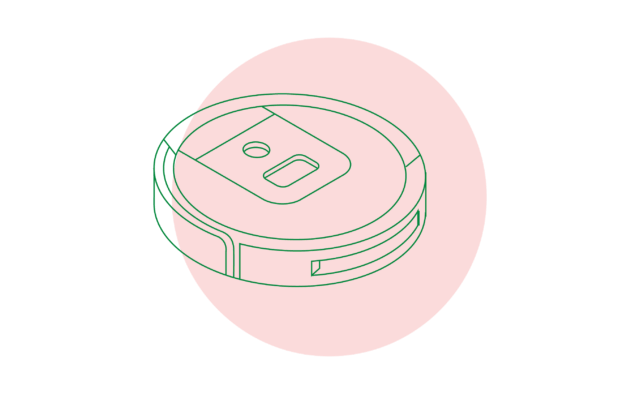
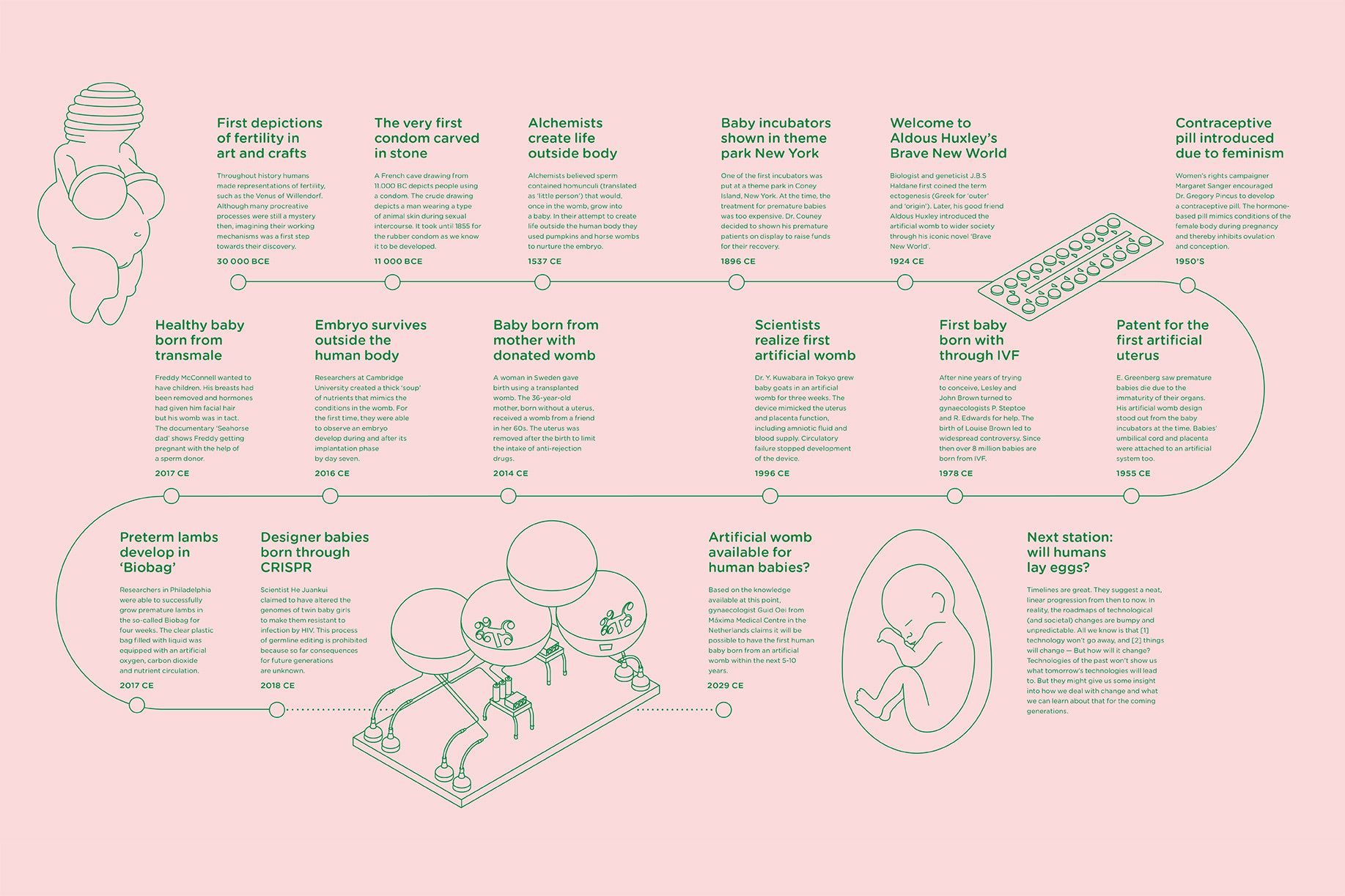
5. Create your reproductive technology
Thousands of years ago, your ancestors created images and stories about fertility and procreation. Today, we have rewritten many of those narratives, and the chances are high you will somehow live them through technology. How will the human story unfold? Browsing through the supermarket of reproductive technologies (pictured above); which ones would you pick?
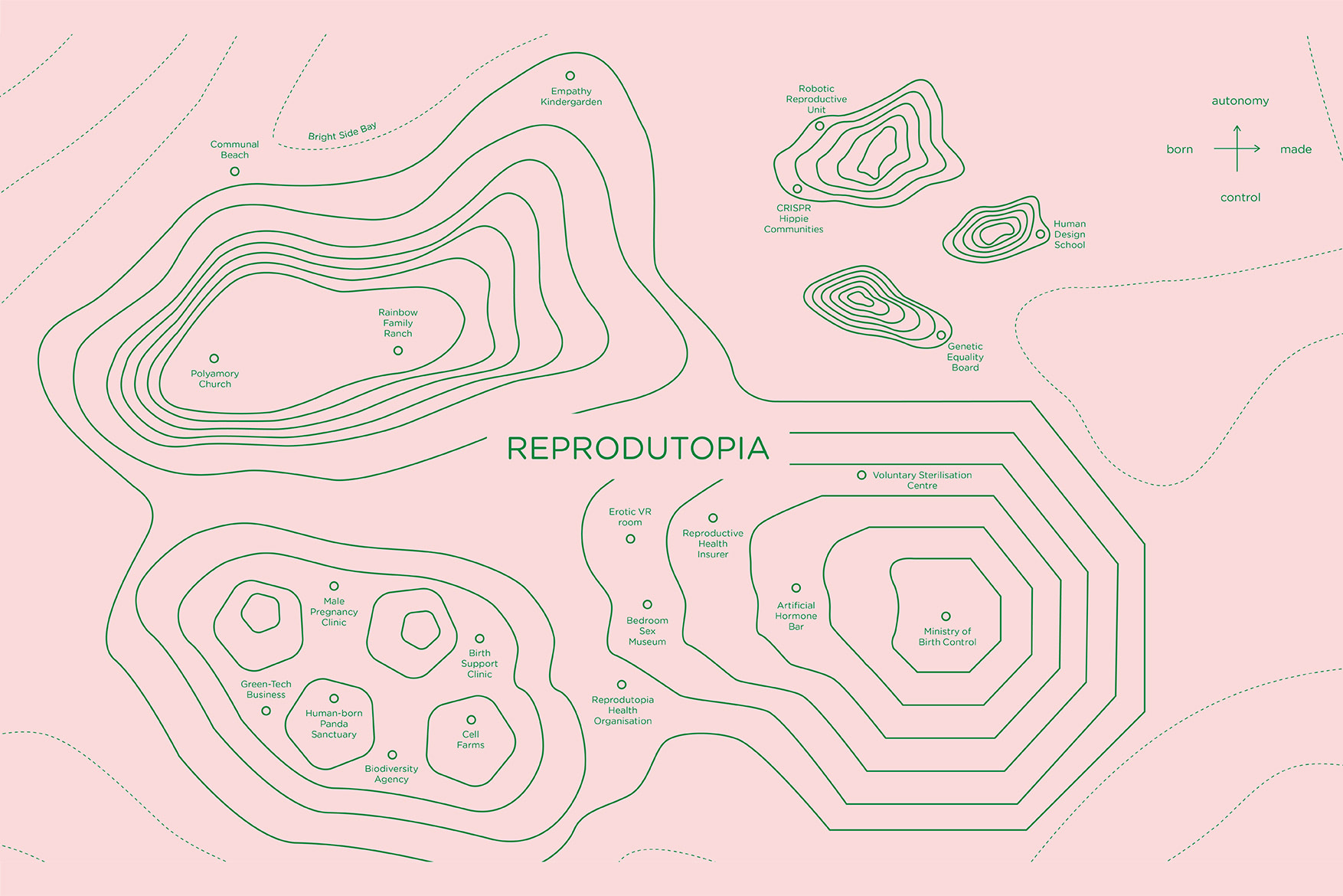
Welcome to your Reprodutopia
Congratulations! You have just started to envision your Reprodutopia. To help you contextualize your idea, we have created a speculative map of Reprodutopia. The map is divided in four sections, based on two axes. The horizontal axis opposes ‘born’ versus ‘made’. The vertical axis does so based on control. These axes then, create four provinces. In the Eastern part of the map, people reject interventions in nature (the born) through technology, whereas the people in the West embrace technology (the man-made); it helps them cope with the hardships of nature.
In the North, people prefer their autonomy over anything else. Yet in the South, people are willing to accept higher levels of control. This then, might result in the development of accessible, safe and gender free Birth Control 2.0 in the Southeast, or an explosion of male pregnancies in the Southwest. Polyamorous rainbow families thrive on their communal hill farms in the Northeast, while transhumanists are pushing the boundaries of what it means to be human in the Northwest. Where would you live?
